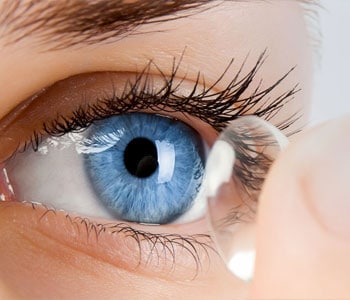Allergic Eye Disease
Allergic eye disease, or allergic conjunctivitis, is an inflammation of the whites of the eyes due to allergic reaction. Although there are many possible allergens, pollens associated with hay fever are the most common culprit. This also leads to the reality that this problem is frequently accompanied by hay fever, leading to a condition called allergic rhinoconjunctivitis.
The symptoms exhibited by those afflicted with allergic eye disease are caused by histamine and other inflammatory substances. These vasodilators cause symptoms in the eyes such as:
- Watering and tearing
- Itching
- Swelling and redness
- Photophobia
- Foreign body sensation
Most of these symptoms are not dangerous at all, but difficult to deal with on a consistent basis. Additionally, symptoms tend to worsen in warm and dry climates.
Treatments are generally targeted at improving a patient’s quality of life, as opposed to attempting to cure or desensitize the allergic reaction. Simple avoidance of known allergens is the most common method of treatment. Corticosteroids are largely avoided unless the situation is dire; in these cases the doctor is usually assigned to monitor the patient.
Corneal Disease
The cornea is a thin, clear, spherical layer of tissue on the surface of the eye that provides a window for light to pass through. In a healthy eye, the cornea bends or refracts light rays so they focus precisely on the retina in the back of the eye.
There are many diseases that can affect the cornea, causing pain or loss of vision. Disease, infection or injury can cause the cornea to swell (called “edema”) or degrade (become cloudy and reduce vision). Common diseases and disorders that affect the cornea include:
- Allergies
- Bullous Keratopathy
- Conjunctivitis (“Pink Eye”)
- Corneal Dystrophies including Fuchs’ Dystrophy and Lattice Dystrophy
- Dry Eye
- Glaucoma (High Eye Pressure)
- Infections
- Keratitis
- Keratoconus
- Ocular Herpes
- Pterygium
- Shingles (Herpes Zoster)
- Stevens-Johnson Syndrome
Treatment for corneal disease can take many forms, depending on the underlying problem as well as the patient’s preferences. Some conditions resolve on their own and many can be treated with medication. If the cornea is severely damaged or if there is a risk of blindness, a corneal transplant may be recommended to preserve vision.
Cataracts
A cataract is a cloudy area in the lens in the front of the eye. There is no pain associated with the condition but there are other symptoms, including:
- Blurred/hazy vision
- Spots in front of the eye(s)
- Sensitivity to glare
- A feeling of “film” over the eye(s)
Most people develop cataracts simply as a result of aging, with the majority of cases occurring in people over the age of 55. Over 1.2 million Americans are diagnosed with cataracts each year. Other risk factors include eye injury or disease, a family history of cataracts, smoking or use of certain medications.
For people who are significantly affected by cataracts, lens replacement surgery may be recommended. During cataract replacement, the most common surgical procedure in the country, the lens is removed and replaced with an artificial one called an intraocular lens (IOL).
Diabetic Evaluation And Care
Patients with diabetes are at an increased risk of developing eye diseases that can cause vision loss and blindness, such as diabetic retinopathy, cataracts and glaucoma. These and other serious conditions often develop without vision loss or pain, so significant damage may be done to the eyes by the time the patient notices any symptoms. For this reason it is very important for diabetic patients to have their eyes examined once a year. Diagnosing and treating eye disease early can prevent vision loss. It is also important to maintain a steady blood-sugar level, take prescribed medications, follow a healthy diet, exercise regularly and avoid smoking.
Retina/Vitreous Disease
The retina is a thin sheet of nerve tissue in the back of the eye where light rays are focused and transmitted to the brain. The vitreous is a gel-like substance that fills the eye and is connected to the retina, optic nerve and many blood vessels. Problems with the retina and vitreous — including retinal tear and detachment, macular degeneration, diabetic retinopathy, infection and trauma — can lead to vision loss and blindness. Early detection and treatment are critical in correcting problems before vision is lost and preventing further deterioration from occurring.
Anterior Segment Diseases
The front section of the eye is known as the anterior segment, which contains important structures such as the iris, lens, cornea, ciliary body and all minor tissue in front of the vitreous humor. This section of the eye holds many intricate and delicate mechanisms that are susceptible to malfunction. Some examples of possible diseases and disorders associated with the anterior segment of the eye are:
- Dry Eyes
- Glaucoma
- Cataracts
- Inflammation/Infection
- Allergic Reactions
- Corneal Dystrophy
- Tumors
- Uveitis/Iritis
- Pterygium
- Refractive Error (leading to nearsightedness / farsightedness)
These problems can be genetically determined, acquired through trauma, develop through aging, or arise as a complication of a systemic disease. Treatment for these conditions ranges from simple eye drops and medication to open-surgery and tissue transplants.





